Will Anti-Streetcar Referendum Succeed?
The process is far more complicated legally than has been reported. Which will make it harder for opponents.
The process is far more complicated legally than has been reported. Which will make it harder for opponents. Back to the full article.


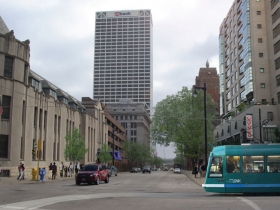
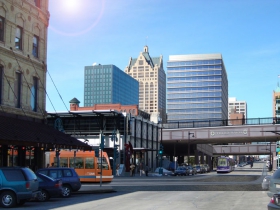
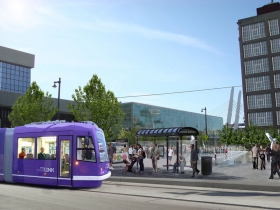
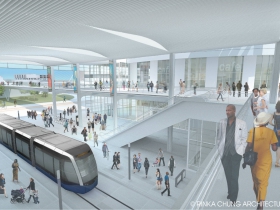
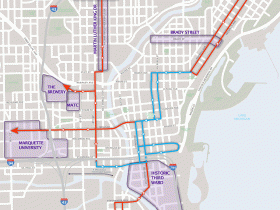
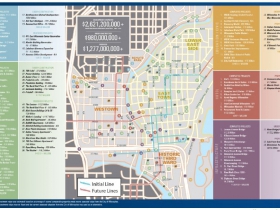




















The J-S ran a story on November 24 quoting Donovan as saying he planned to circulate these petitions. And now Chris Kliesmet says “If I had 60 days, it would be a slam dunk.” So why didn’t he start earlier, like when Donovan raised the issue in November?
Answer: This isn’t about a giving people a vote (they have had years to circulate petitions for one), it’s about delaying the streetcar in the courts after the Common Council finally approves it. (That’s why the November J-S article quoted Donovan as saying he planned to start circulating petitions AFTER the Common Council gave final approval.)
This is similar to what happened in Cincinnati. In 2008, the Cincinnati City Council approved a new streetcar line very similar to Milwaukee’s. After that approval, opponents forced a referendum which was held in 2009. They lost (the streetcar went forward).
Their reaction? File for another referendum (which was held in 2011). They lost again. Ground was finally broken in 2012 and Cincinnati’s streetcar is scheduled to open for passengers on September 15, 2016.
When did Chris Kliesmet move into the city of Milwaukee? And why does most of the opposition come from the suburbs?
January 10, 2015
Dr. Martin L. King said, “The ultimate measure of a man is not where he stands in moments of comfort and convenience, but where he stands at times of challenge and controversy”
I say young, old, millennial, men and women let’s go. You will be surprised at where you can go with hope, will, hit-the-street, handouts, social media, grace and RIGHT. The good news is you are working for you. Make it happen.
The Streetcar issue/spending is not a Transportation issue to benefit the Core Constituents of the city of Milwaukee that need, desperately need viable and real spending of the transportation funding to get them to employment opportunities and care facilities first and foremost. Good sense and charity begins at home then moves to tourists.
As far as defeating Mayor Tom Barrett, he is doing a great job of that himself. He has failed to represent the Core Constituents and they are just tired of that.
As far as Alderman Bob Bauman, he is hung up on the fact, “if we do not spend the funds, it will be given to other communities”. It should be given to others if they are going to benefit the constituents – that is not happening here. Alderman Bauman constituents, African American, other People of Color and the Work Challenged (west of downtown) are the ones he should be fighting for. You are just wrong here Alderman Bauman and we must persevere without you if you do not see the wrong in your judgment.
This is true for all the alderpersons who are hell-bent on spending the people’s money while they flounder economically. We must keep this alive and remember this in the “change of guard in 2016” – since Alderman Bauman reminded us it was not done in 2012.
This issue of working with Chris Kliesmet and Craig Peterson is seen by me as consolidating the base of Like-minds on an issue; and, working with individuals that share-our-views. This is done all the time as a strategy to win when seeking a large goal that benefits the People – All. it is reaching across the aisle.
As for the media, get started with grapevine, recruit, recruit outreachers and follow with social media – mpapublicpolicyreview.blogspot.com, Facebook, Next Door, Twitter and Tweets – the Winning hand.
Lastly, since time is of the essence, DO NOT spin your wheels in doom saying. Get busy. Give me an email jingle (mpapublicpolicyreview@gmail.com) so I can invite-bring others along.
Empowerment for Transportation for the People.
I wonder why its’ o.k. for the ‘Coalition for ‘Justice’ to block Freeways, harass Bucks fans… who knows what they’re planning for Summerfest, or if their ‘righteous disturbance will extend into the 3rd and 5th ward. And is the Trolley immune to their protests? Just properly enlightened folks will be riding the Trolley?
Suggestion: why doesn’t UM research how Milwaukee Country transit routes and schedules are researched and formulated… and clearly delineate which neighborhood(s) is being under served by existing transit. And then explain how the Trolley is going to help in the near future (not the nebulous “Trolley will spur development in 10 years ‘ crap), and why rethinking bus routes isn’t the answer to that problem….
The streetcar is just a step to develop a comprehensive transportation system in the city. For years the suburbs have fought regional transportation issues. Talk show hosts have to have some issue to rag about. This for them is their topic of the season. I can’t think of another reason that a petition drive was started so late, unless it would be political grandstanding.
Oh look, there’s Mary Glass. Perrenial grassroots organizer of UWM. It seems she is opposed to the streetcar? I couldn’t find a stated reason to support her position, merely ambiguous platitudes.
The anti streetcar crowd will have quite the battle. Mayhaps they will be distracted by the minimum wage argument and will squander their furious vigor on arguing that forgone conclusion.
Mary………. what???
Ms. Glass….. did you look at the proposed route beyond the starter system? The streetcar will serve African American neighborhoods to the west, northwest and north. It will also connect MLK, arguably the center of commerce for the African American community, to downtown as well as surrounding neighborhoods. Please be specific. Your post is just a bunch generic ramblings. You make no sense!
I don’t understand Joe Davis or Mary Glass. Do you understand that this is the first step in getting the city connected to the burbs? The region is not going to do it… the system has to have a starting point.
“Do you understand that this is the first step in getting the city connected to the burbs?”
Maybe this is exactly why there is so much opposition from the suburbs. As a whole, they don’t particularly want this connection as they fear it will come with Milwaukee’s problems and Milwaukee’s requests for money.
I’m sure you’re right Kyle, but what problems do the fine folks in the burbs think the streetcar will bring? People will hop on it, rob a bank or store in Waukesha or Mequon or Oak Creek, hop back on again and head home with their loot?
The petition circulators miss some important legislative steps. Once submitted, the City Clerk must review each and every signature and certify that the petitioners have the minimum number of valid sigantures and meet all the other statutory requirements for petitions of this sort. This can take several days or more, especially if a legal opinion is needed from the City Attorney. Then, at the next Council meeting, an ordinance would be introduced to establish this referendum requirement. The City Charter forbids an ordinance being adopted at the same meeting that it is introduced. Instead, the ordinance would be referred to committee and could not return to the full Council until the next Council meeting in February, at the earliest, thus running up against the 70-day prior to the election statutory requirement.
@Kyle, my point is why would Mary Glass fight against the best interests of the people she supposedly is trying to help? Milwaukee is taking the lead on regional mobility because the suburbs will not. I wonder what else “shakedown Mary” and Chris Kliesmet agree on…. probably nothing. By the way Mary…. I’m also a constituent, but you don’t have my best interests in mind do you?
I’m sure some people believe that would happen, though I wouldn’t consider it a particularly rational fear. It’s not as though there’s anything in place to stop a car from making the same trip, and if you’re going to rob a bank you might as well steal a car to get there.
Most people in the suburbs moved there to avoid one or more of the issues that are usually associated with cities: crime, schools, taxes, space, traffic, jobs. I’m not saying we all live in constant fear of those issues creeping out to us, but it certainly motivates people when it comes to political issues. Keep in mind you’re dealing with the same mindset that cheered when the high speed rail project was cancelled. This project isn’t different to most people in the suburbs: It’s a costly infrastructure project they won’t use and don’t want to understand, and they fear they’ll be asked to pay for it, and if they’re being honest some of them like being disconnected.
(This obviously isn’t everyone in the suburbs. Yes, they support infrastructure projects that some other people don’t use. I’m just trying to put context to an opposition.)
I agree with your points Kyle (and for the record I live in the burbs). It’s just hard me to understand believing that a streetcar connecting downtown to the north side and say Waukesha is going to directly result in an increase in crime in Waukesha.
The owner of Southshore mall thinks that buses degrade the value of his mall (at least I think that’s the mall with the recurring bus issues), so I’d guess that it all comes from the same general view. I think the cost sharing will actually be the more substanial issue. Revenues are only projected to hit 30% of operating costs in the densest part of the city, so it seems reasonable to assume that the branches will be less efficient at paying for themselves.
David, I’ve previously laid out my theory on Joe Davis’ motivation, as it builds a suburban donor base for a mayoral run. At the same time he’s trying to build support among Milwaukee voters (thus the downtown vs. core constituents language). As for how this serves Mary Glass (or if this commentor is the same Mary Glass you’d find by Googling her name), I have no idea. I’d be inclined to follow the money and see how it would help MPA to oppose this.
Kyle (post 14), the 30% figure you cite (the portion of initial streetcar operations not subsidized) is in line with MCTS (31%) and better than Madison (26%), Sheboygan (23%), Waukesha Metro (19%), Racine (19%), and Kenosha (16%).
Even in Chicago (for buses and el trains combined), fares and other revenue (like ads) only cover 45% of CTA operating costs.
(All of the above figures, except Milwaukee streetcar, from the 2013 National Transit Database.)
As the streetcar system is extended, costs should go up less than linearly. There are substantial costs (like heating the maintenance facility/car wash, and paying a supervisor/dispatcher up to 19 hours/day) that won’t increase as the system expands.
Also, the above percentages only consider operating costs, and streetcars have lower ongoing capital costs than buses. Buses must be replaced (at $300,000 to $400,000 each) every 10–15 years, while the new streetcars should last 50—100 years.
While it’s a light rail system and not a streetcar, I am intrigued by the success of Utah’s light rail system. While it’s the reddest of red states, residents have continuously voted to raise taxes to support the infrastructure. Rail projects have repeatedly come in on time and under budget. Ridership is increasing annually. If Utah can do it, why can’t we do it?
https://www.enotrans.org/wp-content/uploads/wpsc/downloadables/Utah1.pdf
http://www.deseretnews.com/article/865598365/Commuter-rail-travel-increased-from-2012-to-2013-report-says.html?pg=all
I’ll bet “Mill City Focus” is happy that Columbus Ohio didn’t have any streetcars so rioters couldn’t go elsewhere after setting more than 90 fires following the Buckeyes winning the National title.